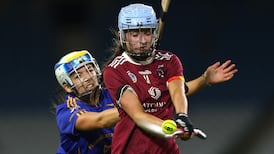Apart from the petulant calling-out of the acting chief medical officer last August because restrictions on spectators weren’t being lifted quickly enough, the GAA has dutifully toed the line on public health directives.
So it was hardly surprising that, in the current controversy between Clare and Wexford over "close contacts", Feargal McGill, the association's director of games administration and point man on Covid, emphasised that the designation of who is a close contact of a positive case is entirely a matter for the HSE.
His comments punctuated a running row between the counties, which continued on Tuesday with Clare county board backing their manager Brian Lohan’s contention that the designation had arisen “on foot of discussions between the contact-tracing team of the HSE and the Wexford players involved who were positive cases”.
The HSE has never given details on how close contacts in specific cases are determined as opposed to casual contacts
This has been vigorously denied by Wexford chair Micheál Martin and on a number of occasions. The county, having spoken to the HSE and players involved, are now believed to be so annoyed by the ongoing dispute that they are considering making an official complaint to Croke Park.
Ongoing feud
There is no mistaking Lohan's strong feelings on this. Plenty of observers see it as an extension of the ongoing feud between him and Wexford manager David Fitzgerald. Perhaps it is, but the impact of the designation on the two Clare players – one of them in particular, who was nearly placed in a difficult position through no fault of his own – shouldn't be ignored.
It is also a matter of major concern for any manager that players can turn up as close contacts after a match with no clarity as to how this happened.
The HSE has never given details on how close contacts in specific cases are determined as opposed to casual contacts. At this juncture in its responsibilities between pandemic, vaccination and Russian hackers, it could be forgiven for being especially uninterested in explaining itself to county teams.
The Wexford close contacts happened because they used a dressing-room for the match in Ennis and two players tested positive a few days later. Use of indoor facilities is discouraged by the GAA unless absolutely necessary and some teams don’t avail of them.
In the current weather, however, it isn’t easy to change under the stand or on the terraces.
From Clare’s perspective there is an understandable sense of grievance in that they don’t know what happened in this complicated case. Contact tracers in the HSE South East passed on information to their counterparts in HSE Mid West and two Clare players were deemed close contacts.
Interactions
Of course, how this happened is of less importance than the fact that it did. These everyday interactions and designations are, after all, intended to protect public health, but, in the absence of any further information, the assumption is that this was deemed on-field transmission.
Close contacts are generally taken to arise in the case of 15 minutes spent face-to-face with and within two metres of an infected person
That makes it a very long-shot occurrence, as detailed by Prof Mary Horgan in Monday's Examiner. A member of both the GAA's Covid Advisory Group and the National Public Health Emergency Team (Nphet), she said that the number of close contacts from on-field activity was just six in 30,000 fixtures over the past year.
“The experience so far for all of the outdoor sports – rugby, soccer and GAA – is that the risk of your on-field activity being considered a close contact is extremely low,” said Prof Horgan. “As with everything when it comes to life, there is never a zero risk, but there is a huge reduction in the risk of being considered a close contact if guidelines are adhered to. And they are being adhered to.”
Close contacts are generally taken to arise in the case of 15 minutes spent face-to-face with and within two metres of an infected person.
On the basis of private video analysis, Clare noted in the case of one of their players that, between the water break and switching markers, such a level of exposure was hard to substantiate.
None of which matters to Croke Park. All it can do is accept such determinations and get on with it. The last thing the GAA needs is to annoy the HSE and create a fuss about something like this, so the prompt response was understandable and appropriate even if Clare feel the statement of fact is almost like a finding against them.
Court of law
These decisions are not like those in a court of law which create precedents, under which other findings can be challenged. Every case is different and treated separately.
It is still a delicate consideration for Croke Park. Close contacts are a constant issue – not those picked up on the field but in the community. They were a regular feature of last year’s club season, and activities were frequently affected. There wasn’t the same impact on the intercounty season but neither was there none.
Offaly’s hurlers and Sligo’s footballers had to forfeit championship matches because the number of close contacts made fielding a team impossible. The use of county team buses was discouraged last year after instances of everyone on board being designated close contacts.
Clare’s statement makes the point that it accepts that the HSE is the final arbiter in these situations but asks how it came to that decision.
The view from Croke Park is that this potential designation of close contact on the field of play is not a matter of concern. Given the statistics, it maintains that these are isolated incidents and not evidence of a troubling trend.
It does sound a muted alarm, though. As Micheál Martin said on Wexford local radio at the weekend, Covid hasn’t gone away and people need to act accordingly.
smoran@irishtimes.com











